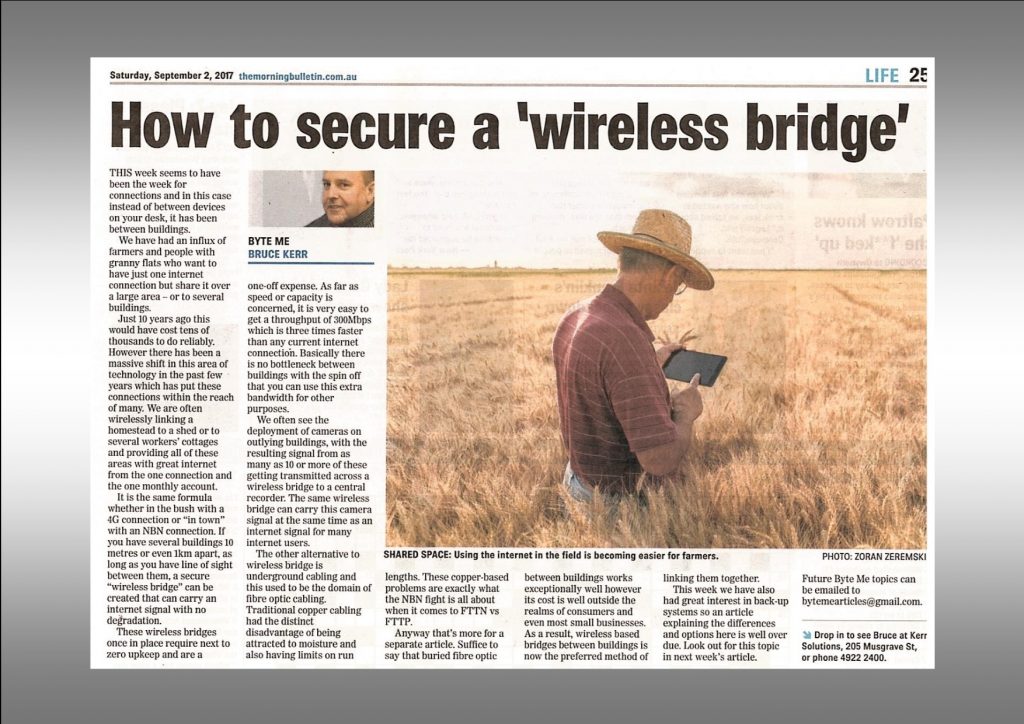2nd September 2017
A to Secure a ‘Wireless Bridge’
This week seems to have been the week for connections and in this case instead of between devices on your desk, it has been between buildings. We have had an influx of farmers and people with Granny flats that want to have just one Internet connection but share it over a large area – or to several buildings.
Just 10 years ago this would have cost 10’s of thousands to do reliably, however there has been a massive shift in this area of technology in the last few years which has put these connections within the reach of many. We are often wirelessly linking a homestead to a shed or to several workers cottages and providing all of these areas with great Internet from the one connection and the one monthly account.
It is the same formula whether in the bush with a 4G connection or ‘in town’ with an NBN connection. If you have several buildings 10 meters or even 1km apart, as long as you have line of sight between them, a secure ‘wireless bridge’ can be created between them that can carry Internet signal with no degradation.

These ‘wireless bridges’ once in place require next to zero upkeep and are a once off expense. As far as speed or capacity is concerned it is very easy to get a throughput of 300Mbps which is 3 times faster than any current Internet connection. Basically there is no bottleneck between buildings with the spin off that you can use this extra bandwidth for other purposes.
We often see the deployment of cameras on outlying buildings, with the resulting signal from as many as 10 or more of these getting transmitted across a ‘wireless bridge’ to a central recorder. The same wireless bridge can carry this camera signal at the same time as an Internet signal for many Internet users.
The other alternative to wireless bridge is underground cabling and this used to be the domain of fibre optic cabling. Traditional copper cabling had the distinct disadvantage of being attracted to moisture and also having limits on run lengths. These copper based problems are exactly what the NBN fight is all about when it comes to FTTN vs FTTP.
Anyway that’s more for a separate article, suffice to say that buried fibre optic between buildings works exceptionally well however its cost is well outside the realms of consumers and even most small businesses. As a result wireless based bridges between buildings is now the preferred method of linking them together.
This week we have also had great interest in backup systems so an article explaining the differences and options here is well over due. Look out for this topic in next weeks’ article.
Future Byte Me topics can be emailed to [email protected] and Bruce is contactable at Kerr Solutions, 205 Musgrave Street or on 49 222 400.
For more advice and assistance from Kerr Solutions, like and follow us on Facebook
